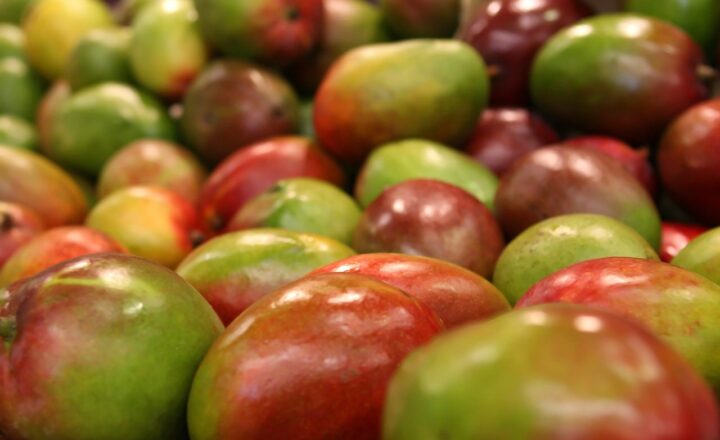10 Bizarre Foods That Will Make You Question What’s Normal to Eat
November 13, 2024

When it comes to food, humanity is delightfully diverse. While some cultures savor familiar flavors, others embrace culinary creations that can only be described as bizarre. From unusual protein sources to bizarre texture combinations, the world is full of unique dishes that might make an ordinary eater question what is truly normal to eat. In this article, we’ll take you on a culinary journey across the globe to discover 10 of the most bizarre foods that leave quite an impression (and sometimes an odd taste) long after the meal is done.
1. Escamoles (Mexico)
Often referred to as “insect caviar,” escamoles are the edible larvae and pupae of ants harvested from the roots of agave plants in Mexico. This delicacy has a buttery, nutty flavor and a texture that is often compared to that of cottage cheese. It is typically served in tacos or quesadillas, or even enjoyed on its own, usually sautéed with butter and spices. Escamoles represent centuries of traditional Mexican cuisine that incorporate insects as a sustainable protein source.
2. Surströmming (Sweden)
Surströmming is fermented herring that’s infamous for its powerful odor, which can clear a room faster than any other food. The fish is typically canned and consumed with flatbreads or crispbreads. Locals claim that it’s a delicacy, particularly when enjoyed outdoors with friends, paired with strong beverages. Despite its pungent aroma, surströmming has a dedicated following and ignites debates about gastronomical preferences, making it a memorable experience for adventurous eaters.
3. Hákarl (Iceland)
One of the most notorious food items in Iceland is hákarl, which is fermented shark. The Greenland shark is buried in the ground for several months to ferment, then hung out to dry for a few more months. The result is a dish with a powerful ammonia smell and an earthy flavor that’s said to be an acquired taste. Brave souls who try hákarl often recommend pairing it with shots of Icelandic schnapps to wash it down, creating a unique tasting adventure.
4. Century Egg (China)
A century egg, or hundred-year egg, is a preserved egg that’s darkened to a deep green or black color through a curing process involving clay, quicklime, and ash. Its preparation may sound strange, but many find the creamy yolk and gelatinous white surprisingly delicious. Often served in congee or as a snack, century eggs have a rich taste reminiscent of strong cheese, making them both an eye-raising and palate-pleasing experience.
5. Casu Marzu (Italy)
Casu marzu, or “rotten cheese,” is a traditional Sardinian cheese known for containing live insect larvae. The larvae help ferment the cheese, creating a soft, spreadable consistency and a very strong flavor. While some might recoil at the thought of dining with maggots, fans of this dish assert it is an explosion of robust and rich flavors. It is typically enjoyed with bread and paired with a glass of red wine, pushing the limits of what many consider acceptable.
6. Fried Tarantulas (Cambodia)
In Cambodia, fried tarantulas are a crunchy street food delicacy. Locals often describe the taste as a mix between chicken and fish, with a satisfying crunch when bitten into. Surprisingly nutritious, these deep-fried arachnids are often seasoned with garlic and salt, and they make for a daring snack option that’s not for the faint-hearted. Visitors to Cambodia often find the prospect of trying fried tarantulas a memorable and adventurous culinary experience.
7. Sannakji (South Korea)
Sannakji is a dish made of live octopus cut into small pieces and served immediately, still wriggling on the plate. It’s a popular dish in South Korea that’s often seasoned with sesame oil and served with sesame seeds. Eating sannakji is a true test of food bravery, as the small octopus pieces have suction cups that cling to your mouth, making the experience both fun and slightly challenging. Those who love seafood often find this dish exhilarating, diving into the adventure of consuming one of the ocean’s most intriguing creatures.
8. Blood Sausage (Various)
Blood sausage, also known as blood pudding, is made from animal blood (typically pig or cow) mixed with fat, grain, and seasonings, then cooked in a sausage casing. This dish has variations across cultures, existing in many forms worldwide, such as black pudding in the UK, morcilla in Spain, and boudin in France. These regional varieties showcase an interesting blend of spices and herbs that many find delicious when served with onions or warm bread.
9. Fried Grasshoppers (Mexico)
Grasshoppers, or “chapulines,” are a popular snack in Mexico, especially in Oaxaca. Roasted and often seasoned with garlic, lime juice, and salt, they provide a healthy crunch that’s rich in protein. They are commonly sold in market stalls and often used as a filling for tacos or enjoyed as a crunchy topping on various dishes. This nutritious snack reflects the ingenuity and adaptability of Mexican cuisine, appealing to those willing to step outside their culinary comfort zones.
10. Rocky Mountain Oysters (United States)
Despite the name, rocky mountain oysters are not seafood but rather a dish made from bull testicles. Coated in batter and deep-fried, they are often served at fairs and festivals as a brave and adventurous delicacy. Most diners take a chance on this dish expecting a taste somewhat similar to chicken or calamari. This controversial dish certainly raises eyebrows and is sure to turn heads when mentioned at dinner.
Conclusion
These 10 bizarre foods serve as a reminder of the incredible diversity found within global cuisine. What one culture might consider a delicacy, another may find unfathomable. It challenges us to reflect on our own food preferences and beliefs about what’s considered normal to eat. As culinary curiosity continues to grow, stepping outside the box and trying these bizarre culinary experiences could broaden our horizons and allow us to understand and appreciate cultures around the world.
Whether you opt for fried tarantulas or fermented herring, remember that food is a unique and cultural adventure. So, the next time you’re presented with an unusual dish, take a brave bite and immerse yourself in the flavors of the world!








